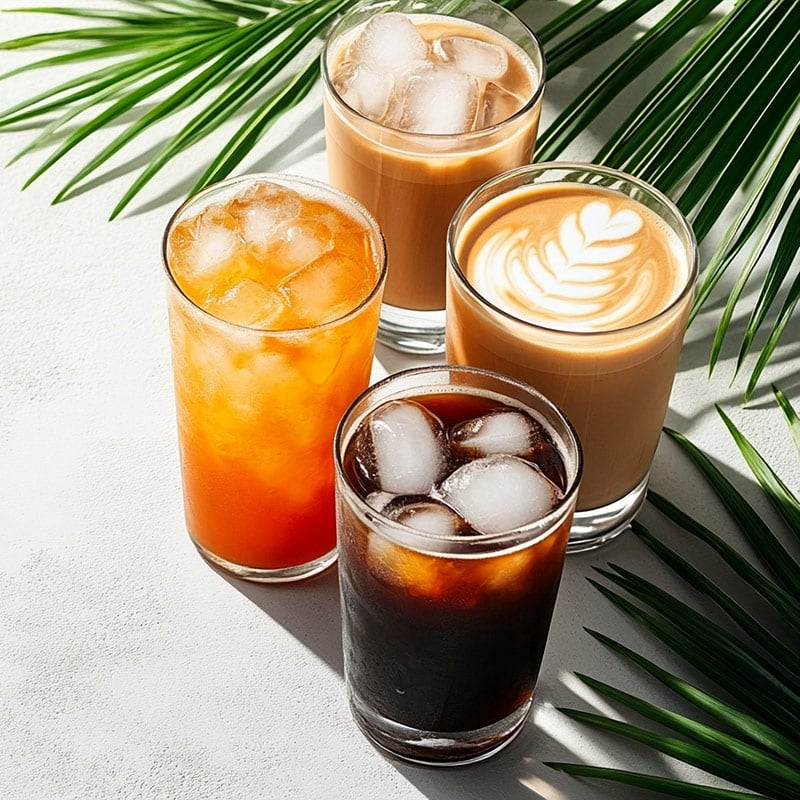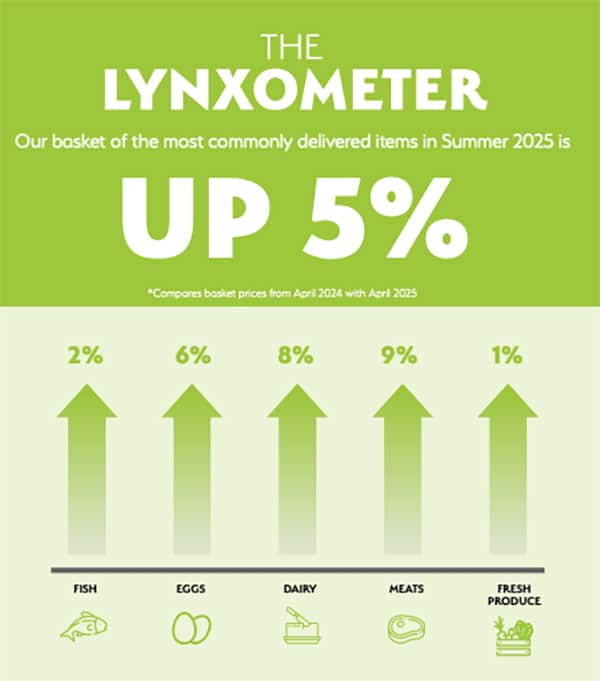Market Forecast
Summer 2025
Counting the Cost of Waste
Even in a challenging market, there are always opportunities. People still want to go out to eat and drink, and there are plenty of well-run businesses, offering menus that meet expectations in terms of value and quality, that are competing successfully,
There are also key areas in every hospitality business where it’s possible to make a real difference to the bottom line. Purchasing discipline doesn’t stop at the point of delivery. Managing food waste in the kitchen and throughout the business can have a dramatic impact on costs. All too often, plates that are piled high with food when they’re sent out to the customer, come back with food left on them, which has to be thrown away.
This waste is costly on two counts: the money that was spent buying unnecessary food and the ever-increasing cost of disposing of it. Most businesses are now required to separate food waste for collection. This has already been an eye-opener for many, prompting operators to look again at the amount of food that is simply binned.
The requirement to include calorie counts on menus is also a factor. Many consumers now stop and think more carefully about the amount they eat, and are looking for healthier choices. Plates piled high with food aren’t always as appealing as some chefs seem to think.
As ever, it’s good advice to keep talking to suppliers, who can often advise on or recommend portion sizes, and to keep menus and dishes flexible where possible in order to make the best of changing availability and seasonal produce.
The Good
- Inflation expected to remain at relatively low levels
- Global markets calmer after US tariff shocks
- UK summer produce in abundance
The Bad
- Continued uncertainty over global economy
- Consumer confidence remains low
- Higher operating costs for all operators

Menu Watch
Chefs are increasingly blurring the boundaries between different menu styles, according to new research. This ‘borderless cuisine’ style takes a multicultural approach to dishes, ranging from putting global spices in a traditional stew or pie, to adding a savoury note to ice-cream with a dash of Japanese miso.
Arriving from the US, via social media and into some UK restaurants, is the ‘seafood boil’, which has its roots in traditional Cajun cooking. Using a range of different seafood in a single dish, it’s often cooked and served alfresco. This trend has the advantage of enabling chefs to use a broader range of fish species and the catch of the day, promoting sustainability – and good value.
Generation Z, the cohort of consumers now in their late teens to mid-20s, are skipping traditional hot drinks such as tea and coffee, preferring beverages such as iced coffee and cold brews, according to research into drinks trends. Operators are using more fresh fruit and flavoured syrups to add variety to the range of iced drinks on offer.
FRUITS
Imported fruit, particularly strawberries and raspberries, has been a challenge in terms of both quality and availability due to adverse weather conditions in the Mediterranean and beyond. Following the warm weather in April and May, supplies from UK growers are expected to be high quality as they become available.
BEEF
Beef prices have been rising in the UK and across Europe since the start of the year, driven by lower production and continued high demand. Operators should expect to pay the highest prices for the most popular cuts. While dishes that use a range of different cuts can help mitigate costs, suppliers are advising that further increases should be expected for all beef products.
POULTRY
Higher prices for both fresh and pre-made chicken products, such as wings and burgers, are forecast for at least the next few months. British poultry producers are calling for a relaxation of planning rules which limit expansion, while the continued impact of restrictions aimed at reducing the spread of avian flu is affecting the market globally.
VEGETABLES
UK-grown vegetables including carrots, cauliflower, broccoli and white cabbage are good quality and ideal to feature on summer menus. Some onion crops were affected by bad weather earlier in the year, and are being supplemented by European imports.
COOKING OILS
Olive oil suppliers in the Mediterranean expect to see a recovery in supplies this year, although, as always, the crop is very weather dependent. The continued conflict in Ukraine is keeping sunflower oil prices high. This also has a knock on effect on pre-made food products that use cooking oil as an ingredient.
POTATOES
Potato prices have continued to increase, in the aftermath of extreme weather impacting both availability and quality of last year’s crop. Operators who can use a broader range of varieties, without worrying too much about size and appearance, will be in the best position to make the most of available supplies.
SALADS
Problems with availability of imported peppers and tomatoes should ease once more UK supplies come onto the market. Imported cucumber and baby leaf salads are better quality. UK growers are expecting salad crops, including heritage tomatoes, to be good quality generally thanks to the favourable weather.
DAIRY
There was a sharp increase in the price of butter in March, with demand running ahead of the time it takes dairy farmers to expand their herds and increase production. Cheese also saw prices increase, which is likely to continue across the summer, while egg supplies are seeing shortages due to avian flu.
FISH AND SEAFOOD
The availability and quality of fish and seafood improves as better weather allows the UK fishing fleet to go to sea more often. With a broader range of species being landed, operators should make use of fish such as monkfish and coley on menus.
PORK
Pork remains better value than beef, but prices are increasing above the rate of inflation, with demand running ahead of producers’ ability to increase capacity. Operators should budget for higher costs across all pork products this summer.
WINE
Recent reports that global wine consumption is in decline are a challenge for producers, but may create opportunities for those operators able to keep wine lists flexible, as availability changes.
COFFEE
Further double digit rises of between 20% and 25% are being forecast in retail coffee prices, as markets continue to feel the impact of extreme weather conditions in many of the world’s coffee producing regions, including Brazil. With supermarkets negotiating strongly to keep prices low, hospitality operators may come under pressure to pay more,
Inflation
The headline rate of inflation in the UK was 2.6% in March, down from 2.8% a month earlier. With inflation forecast to increase over the summer, there were significant rises recorded in the inflation rate for some staple food items, including beef up 8.5%, fresh potatoes up 9.6% and butter up 19.8%.
Share this Market Forecast


- Seasonality Guide
IN SEASON
- Raspberries
- Broad Beans
- Heritage Tomatoes
- Cherries
- Courgettes
- Plaice
- Mackeral
- Sardines
- Hake
- Native Lobster
- Crab


- Seasonality Guide
IN SEASON
- Raspberries
- Broad Beans
- Heritage Tomatoes
- Cherries
- Courgettes
- Plaice
- Mackeral
- Sardines
- Hake
- Native Lobster
- Crab